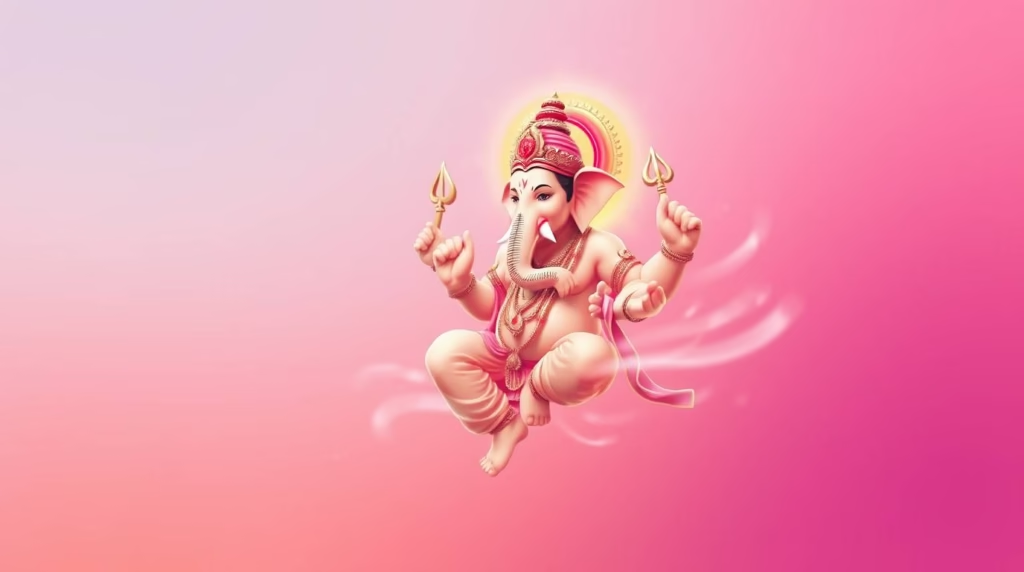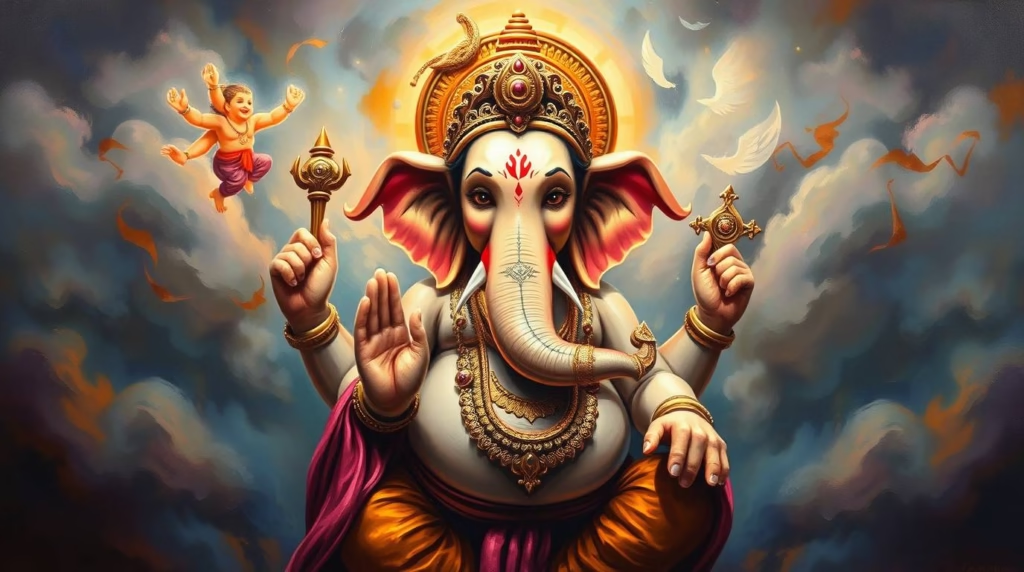The Ashta Vinayak: Discovering Ganesha’s Eight Divine Forms and Their Enduring Significance
Lord Ganesha is invoked at the start of every Hindu ritual, trusted as the remover of obstacles and guardian of righteousness. But beyond his popular form, Ganesha is also worshipped as Ashta Vinayak — eight sacred manifestations, each deeply woven into Maharashtra’s ancient mythology and spiritual pilgrimage tradition. These revered forms, described vividly in Hindu scriptures including the Mudgala Purana and Skanda Purana, symbolize distinct lessons and the transformative journey from confusion to clarity. Embarking on the Ashta Vinayak yatra is therefore more than just visiting eight temples; it becomes a pursuit for spiritual mastery, self-realization, and conscious living.
Learn how each form’s legendary story, location, and symbolism can help in overcoming everyday struggles, fostering inner growth, and attaining liberation. This detailed guide aims to illuminate the core significance of all eight Ashta Vinayak temples, ensuring SEO optimization and originality for readers seeking both spiritual and scholarly insight.

Introduction to Ashta Vinayak
Ashta Vinayak literally translates to “eight Ganeshas,” referring to eight ancient temples in Maharashtra, each dedicated to a unique manifestation of Lord Ganesha. These forms are not separate deities, but distinct revelations of the same truth — the universal journey through desire, discipline, humility, and enlightenment. Pilgrims believe that the Ashta Vinayak yatra, spanning towns like Morgaon, Siddhatek, Pali, Mahad, Theur, Lenyadri, Ozar, and Ranjangaon, unlocks deep inner transformation, as each temple ritualistically addresses a specific human weakness.
The Spiritual Essence of Ashta Vinayak Worship
-
Ganesha’s eight forms serve as progressive milestones for seekers, each representing lessons that guide individuals beyond material pursuits and personal limitations.
-
The journey is rooted in ancient stories from Puranas, teaching that every trial is not merely a hurdle but an opportunity for spiritual advancement.
Moreshwar (Morgaon): The Origin and Victory Over Desire
Moreshwar, situated at Morgaon, is considered the starting point of the yatra. Legend tells of Ganesha vanquishing the demon Sindhu while riding a peacock, symbolizing victory over restless desires.
-
The peacock is a metaphor for purity and control, a necessary prerequisite for any spiritual or personal journey.
-
Worship at Moreshwar is believed to impart courage to begin afresh and instill self-restraint, marking the essential first step to wisdom.
Siddhivinayak (Siddhatek): Ganesha, the Granter of Siddhi
At Siddhatek, Ganesha is honored as Siddhivinayak, the bestower of accomplishment and spiritual mastery. Mythology narrates that even Lord Vishnu worshipped this form to gain strength against evil forces.
-
Siddhi here goes beyond mundane success; it points towards conquering one’s inner weaknesses and mastering the self.
-
Devotees seek blessings for transformation, not merely achievements, embodying the pursuit of authentic fulfillment.

Ballaleshwar (Pali): Celebrating Devotion Over Ritual
Unique among all Ashta Vinayak temples, Ballaleshwar derives its name from Ballal, a loyal child devotee whose unwavering faith moved Ganesha to stay in Pali.
-
The temple highlights the supremacy of pure devotion over rigid ritual or worldly status.
-
God, in this aspect, rewards sincere, childlike faith, reminding devotees that true spiritual power stems from love more than elaborate procedures.
Varadvinayak (Mahad): The Generous Giver of Boons
Varadvinayak, located in Mahad, is revered for bestowing wishes and boons. Yet, scriptures caution that with every gift comes responsibility.
-
Genuine blessings must be received with wisdom, lest uncontrolled desires further bind the seeker.
-
Varadvinayak’s lesson is to ask mindfully, channeling generosity without losing the awareness of consequences.
Chintamani (Theur): Peace Beyond Materialism
The legendary story at Theur revolves around Sage Kapila, who regained the mystical jewel Chintamani with Ganesha’s help, only to realize that true peace resides within, not in possessions.
-
Chintamani stands for detachment and serenity, guiding worshippers toward mental contentment instead of material accumulation.
-
Inner tranquility, this form teaches, is the ultimate and unstealable jewel.
Girijatmaj (Lenyadri): Discipline and Perseverance
Lenyadri hosts Girijatmaj Ganesha, the only temple set within a mountain cave, marking the site where Ganesha appeared in response to Parvati’s years-long penance.
-
The temple’s remote, arduous access symbolizes the essential nature of discipline and sustained effort in every spiritual endeavor.
-
Devotees ascend 283 steps, reinforcing the idea that spiritual growth requires endeavor and resilience, never shortcuts.
Vighneshwar (Ozar): Conquering Obstacles
Vighneshwar, situated in Ozar, is where Ganesha subdued the demon Vighnasura, ensuring that obstacles cannot harm true devotees.
-
Faith, channelled through this form, transforms hindrances into stepping stones for progress.
-
The very act of worship here reaffirms belief in the power of surrender and trust when facing life’s unpredictable challenges.
Mahaganapati (Ranjangaon): Embodying Wisdom and Strength
Mahaganapati in Ranjangaon is famed as the form which even Lord Shiva worshipped before his battle with Tripurasura, signifying the union of immense wisdom and strength.
-
This temple imparts the pivotal lesson of balance; wisdom without strength is powerless, strength without wisdom is perilous.
-
Mahaganapati stands as a reminder that real protection comes from the harmonious integration of both attributes.
Why Are All Eight Forms Worshipped Together?
The interconnected pilgrimage to all eight Ashta Vinayak temples reflects not random devotion, but strategic self-awareness. Each manifestation teaches how to overcome flaws such as desire, pride, impatience, greed, ignorance, fear, imbalance, and distractions on the spiritual path.
-
The combined ritual touches on holistic self-improvement, guiding the worshipper from outward struggle to inward surrender.
-
Quoting the Ganesha Atharvashirsha: “Tvam eva sarvam khalvidam brahma” (“You alone are all this, indeed Brahman”), the eight forms summarize that every aspect of human experience is a piece of divine realization.
Practical Wisdom From Ashta Vinayak Temples
-
The tradition of invoking Ganesha as Vighnaharta goes deeper than merely removing physical obstacles; it transforms perspectives, so adversities become valuable lessons.
-
The Ashta Vinayak pilgrimage encourages spiritual seekers to embrace life’s challenges, not as burdens, but as steps toward the true self, closer to the divine essence.
The Journey Beyond Ritual
For millions, the Ashta Vinayak yatra is a living testament to Maharashtra’s spiritual heritage and the timeless truths woven into Hindu philosophy. Each temple stands as a gateway to personal transformation, echoing the message that worship is more meaningful when it leads to practical change and self-realization.
-
Through visiting Moreshwar, Siddhivinayak, Ballaleshwar, Varadvinayak, Chintamani, Girijatmaj, Vighneshwar, and Mahaganapati, devotees symbolically cleanse themselves, reach acceptance, and resolve internal conflict.
-
The stories and rituals of these sacred sites are perennial reminders to convert material desires into wisdom, heartache into hope, and uncertainty into faith.
Conclusion: Ashta Vinayak’s Transformative Power
The legacy of the Ashta Vinayak temples exceeds ritual tradition, becoming a profound journey through self-discovery, overcoming of obstacles, cultivation of inner peace, and realization of true devotion. For seekers and spiritual enthusiasts worldwide, understanding Ganesha’s eight forms serves as a timeless guide out of illusion and into light, turning spiritual practice into actionable wisdom.
By contemplating and journeying through the Ashta Vinayak circuit, one not only honors ancient Indian tradition but steps onto a personal path toward clarity, fulfillment, and liberation — the ultimate gifts of Lord Ganesha.
for more related news visit BB
